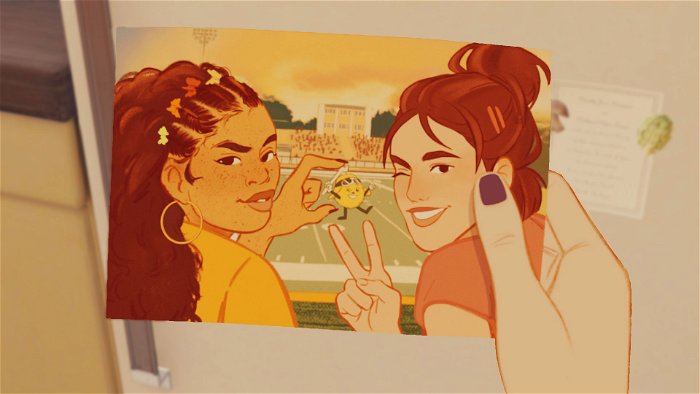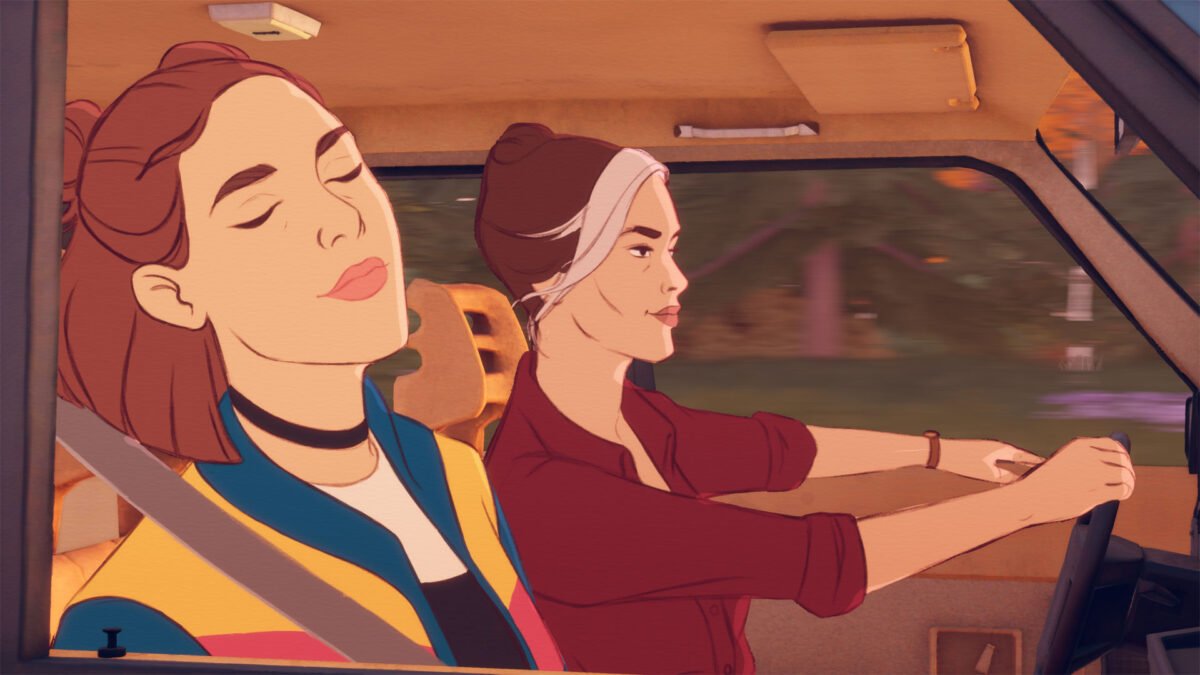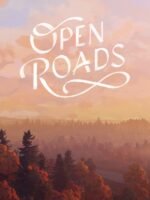I really wanted to check out Open Roads because it made me realize it’s been a very long time since I reviewed any game like it. Initially, I thought this was going to be a walking simulator akin to What Remains of Edith Finch, but I was surprised to see it was somewhat closer to the old Telltale games—which I haven’t played since 2018.
Similar to the Telltale games, Open Roads is much more of an experience than a game, but it was one that I definitely got sucked into thanks to an interesting story, endearing characters and a genuine sense of style. It’s a genuine reminder that games don’t necessarily have to do a lot if they do something really well.

Open Roads tells the story of Tess Devine and her mother, Opal, who, while cleaning out their grandmother/mother’s house after her death, stumble upon an old diary with long-buried secrets hidden within. This leads the two on a road trip adventure to uncover truths about the woman they thought they knew and potential secrets about their family history. I won’t say any more for fear of spoilers, but it’s a genuinely engaging plot that continuously unfolds in compelling ways as you begin to learn more about their family’s past.
However, it’s made more engaging by Tess and Opal’s own relationship as mother and daughter. As a teenager, Tess is starting to figure things out not only for what she wants in life but the complicated nature of parental and familial relationships. Opal is clearly emotionally burdened and exhausted but only wants what’s best for her daughter. While it’s not the most perfect in terms of delivery, these two feel like actual human beings and despite the wild journey they’re on, they’re both extremely relatable.
“Open Roads is much more of an experience than a game, but it was one that I definitely got sucked into thanks to an interesting story, endearing characters and a genuine sense of style.”
Gameplay is a simple blend of first-person exploration, and dialogue encounters as players will guide Tess through various locations—examining objects, solving small puzzles and trying to piece together the family’s mysteries. Like a lot of walking sims, most objects are interactable and can often lead to fleshing out the story in small ways. Adding to the dynamic is the way so many objects can prompt a conversation with Opal as she either sheds some light on an object from her youth or just comments on the situation. It always feels like the two are together, sharing the adventure and experiencing it from their own point of view.
Outside of the exploration are the conversations between Tess and Opal, or occasionally Tess and her Dad or her best friend Francine via text. Occasionally players will be able to choose how Tess might respond to certain situations but as far as I can tell this doesn’t really affect the narrative or how Tess and Opal’s relationship changes throughout the game. However, it does add an interesting layer to the proceedings and can potentially deepen players’ insight into Opal as a character.

But it was Open Roads’ aesthetic that really stood out to me. The game utilizes an interesting hand-animated aesthetic primarily for the characters that evoke the style of Don Bluth or the animation of The Iron Giant. Similarly, much of the environments have a somewhat cel-shaded look that adds to the look of the whole thing. However, if I have one complaint with the visuals it’s that it really could have used more animation.
Tess and Opal have that video game thing where they kind of cycle through simple animations and it becomes incredibly noticeable, especially during prolonged moments of dialogue. I couldn’t help but feel like for a game this stylized, they really could’ve gone the extra mile to really bring them to life.
Also, for a game that requires you to constantly pick up letters or pieces of paper, you’d really wish they would’ve rendered that “pick up” animation on a separate layer so half a document doesn’t clip into a table. It may be a nitpick, but it’s always a bit annoying to have to put something down and set the appropriate distance from certain geometry to be able to read something.

In the audio department, while the game does occasionally feature some ambiance or musical accompaniment for certain scenes, the majority of the heavy lifting is done by Tess and Opal who are given an incredible amount of depth and character by Kaitlyn Dever and Keri Russell respectively. Dever and Russell really bring these two to life and infuse them with pathos and personality that makes their individual struggles so deeply personal. If there’s any reason to keep playing Open Roads, it’s these two.
Like I said at the beginning, Open Roads isn’t so much a game as it is an experience—insofar that all games are experiences. It’s a gripping, interesting and immensely charming game that doesn’t take very long to get through and is captivating the whole way through. For the Open Roads Team’s debut title, they did an excellent job, and I’m genuinely excited to see what comes next.






